Petunias, planting guide and care work
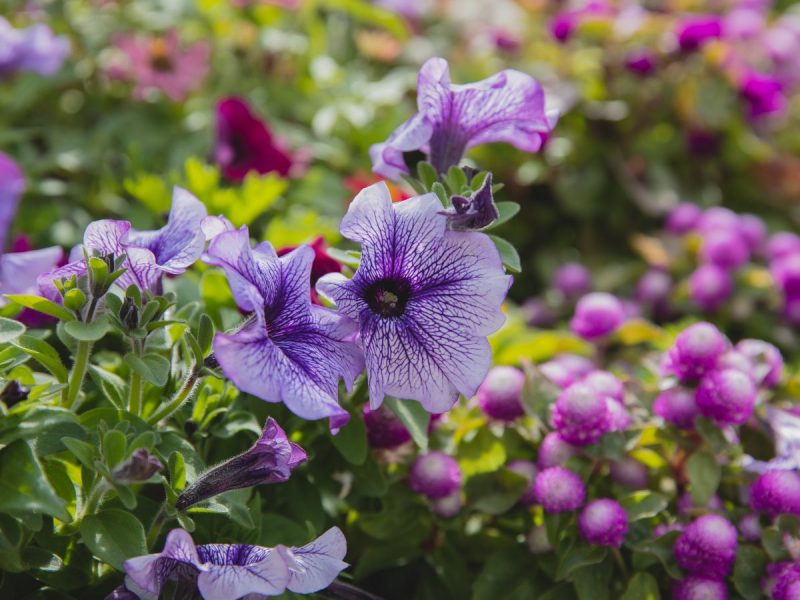
Petunias (Petunia spp.) are perennial herbaceous plants, but cultivated as annual plants. They are part of the Petunia genus, which includes approximately 35 species of flowering plants, native to South America. Petunias are some of the most popular garden plants, often grown in flowerpots, planters, hanging baskets or directly in the ground.
They bloom abundandly and can be found in a wide variety of colors, with simple, bicoloured or stripes flowers. The petals can be simple or double, with crinkled or smooth edges. Petunias bloom at the beginning of summer and keep their flowers until late autumn. The leaves are sessile, elliptical, with a smooth edge, while some species have fine and sticky hairs on the leaves.
Petunias – Species and varieties
Depending on the characteristics, appearance and care needs, the varieties of petunias are divided into 5 main groups:
- Grandiflora: it stands out thanks to its large flowers and it is often grown in planters and hanging baskets. Petunia Grandiflora is not suitable for hot and humid climates;
- Multiflora: it has smaller flowers than the species in the Grandiflora group, but this aspect is compensated by the abundance of flowers. The varieties of this group are more resistant in humid weather;
- Floribunda: it is intermediate between the Grandiflora and Multiflora groups. The plants form many flowers of medium size;
- Milliflora: it forms small, but abundant and long-lasting flowers;
- Avalanche: it grows at ground level and spreads quickly. Since the flowers are formed along the length of the stem, they can be successfully grown to cover the ground or in hanging baskets.
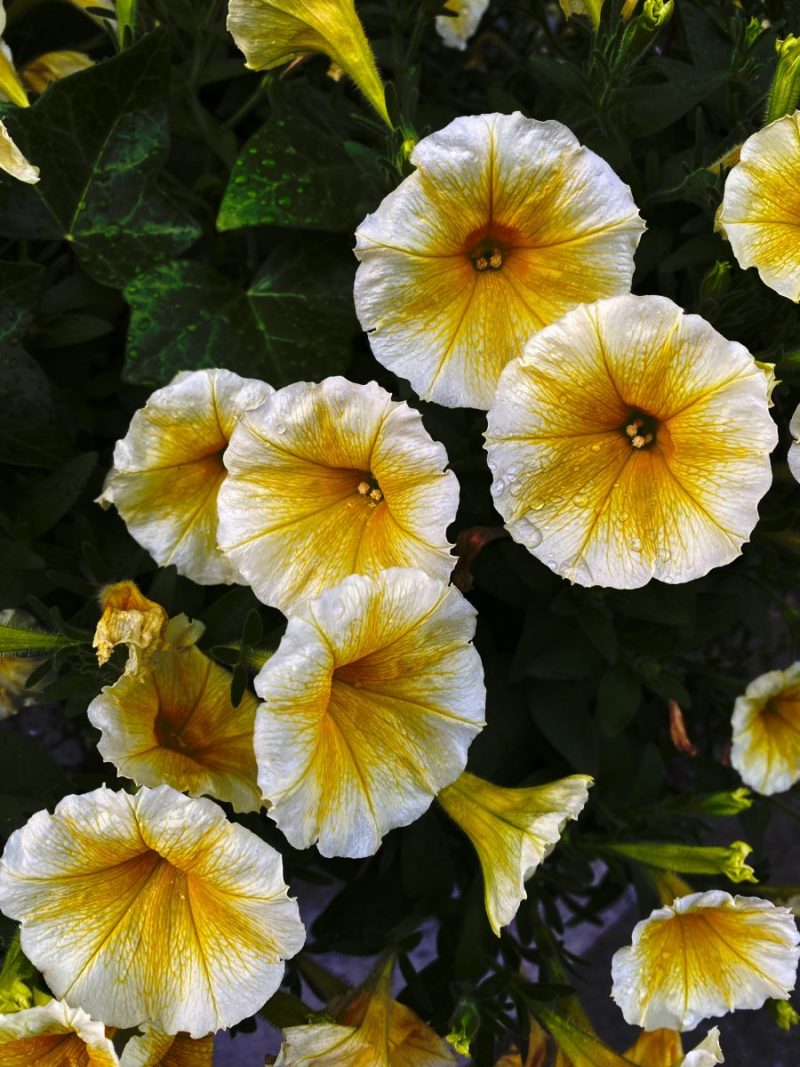
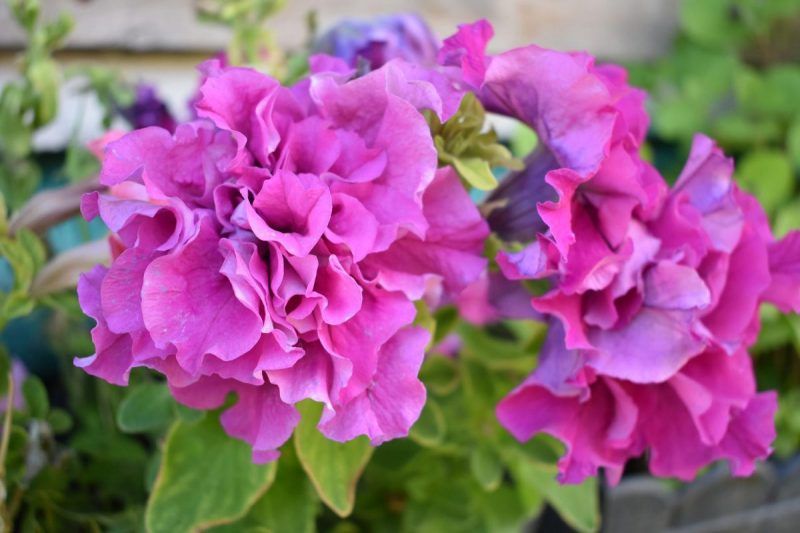
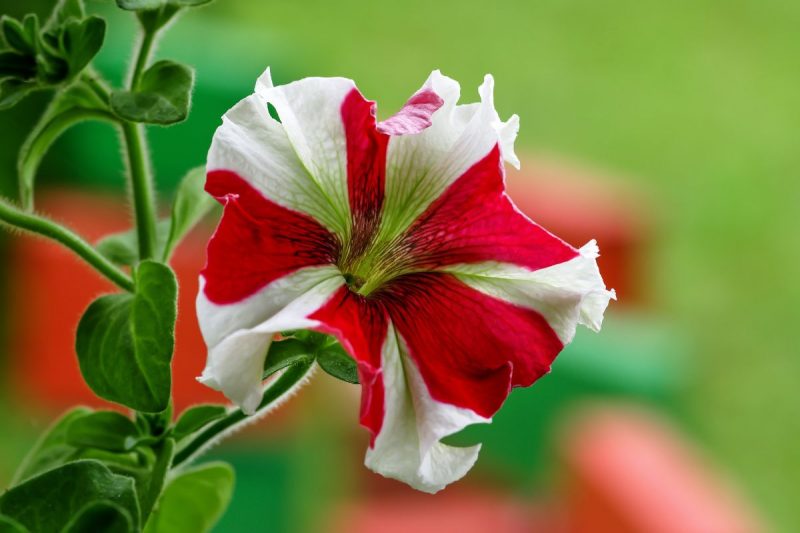
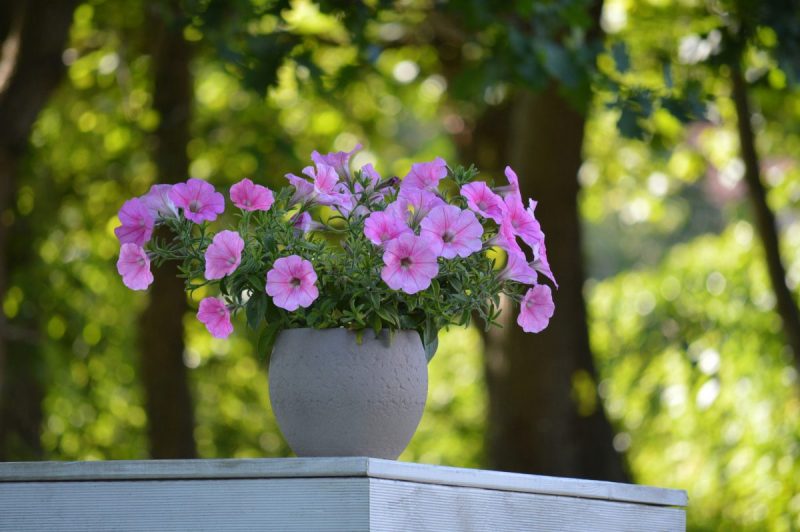
Environmental conditions
Light. Petunias grow and bloom in bright places, where they can benefit from sunlight for at least 6 hours a day. However, on hot summer afternoons, when the sun is strong, they can be placed in partially shaded places.
Temperature. Petunias need an average temperature of 18-22 °C. They can tolerate lower temperatures, but are sensitive to cold and frost.
Humidity. These plant species need slightly low to moderate atmospheric humidity.
Soil. Light, fertile soils with a slightly acidic pH are recommended for petunias. They can tolerate a wide variety of soils/substrates if they provide good water drainage.
Recommended products
-
You can find products on a different store
Change Store -
You can find products on a different store
Change Store -
You can find products on a different store
Change Store -
You can find products on a different store
Change Store -
You can find products on a different store
Change Store -
You can find products on a different store
Change Store -
You can find products on a different store
Change Store -
You can find products on a different store
Change Store -
You can find products on a different store
Change Store -
You can find products on a different store
Change Store -
You can find products on a different store
Change Store -
You can find products on a different store
Change Store -
You can find products on a different store
Change Store -
You can find products on a different store
Change Store -
You can find products on a different store
Change Store -
You can find products on a different store
Change Store -
You can find products on a different store
Change Store -
You can find products on a different store
Change Store -
You can find products on a different store
Change Store -
You can find products on a different store
Change Store -
You can find products on a different store
Change Store -
You can find products on a different store
Change Store -
You can find products on a different store
Change Store -
You can find products on a different store
Change Store
Petunias – Care
Watering. These species need moderate watering, so that the soil/substrate is kept damp. Excessive moisture can lead to root rot.
Fertilizing. It is recommended to fertilize petunias at the time of planting with balanced fertilizers, which stimulate rooting. Later, during the vegetative growth period, to ensure their growth and to help the flowering process, the regular administration of fertilizers specially formulated for flowering plants is recommended.
Recommended products
-
You can find products on a different store
Change Store -
You can find products on a different store
Change Store -
You can find products on a different store
Change Store -
You can find products on a different store
Change Store -
You can find products on a different store
Change Store -
You can find products on a different store
Change Store -
You can find products on a different store
Change Store -
You can find products on a different store
Change Store -
You can find products on a different store
Change Store -
You can find products on a different store
Change Store -
You can find products on a different store
Change Store -
You can find products on a different store
Change Store -
You can find products on a different store
Change Store -
You can find products on a different store
Change Store -
You can find products on a different store
Change Store -
You can find products on a different store
Change Store -
You can find products on a different store
Change Store -
You can find products on a different store
Change Store -
You can find products on a different store
Change Store -
You can find products on a different store
Change Store -
You can find products on a different store
Change Store -
You can find products on a different store
Change Store -
You can find products on a different store
Change Store -
You can find products on a different store
Change Store
Propagation. Petunias can be propagated by cuttings or seeds (a popular method).
The seedling will be sown in hotbeds/crates at least 10-12 weeks before planting. The seeds are spread on the surface of the substrate (moistened in advance), then gently pressed. They must not be covered with soil because they need light to germinate. The plants will sprout within 8-10 days. When the seedlings will have 3 true leaves, they can be transplanted directly into the flowerpot, then they will be kept in optimal conditions until they can be moved outside.
Propagation by cuttings is specific to petunias with involt flowers. For this propagation method, top cuttings are used, harvested at the end of the summer, which are later rooted in a fresh, well-moistened substrate.
Recommended products
-
You can find products on a different store
Change Store -
You can find products on a different store
Change Store -
You can find products on a different store
Change Store -
You can find products on a different store
Change Store -
You can find products on a different store
Change Store -
You can find products on a different store
Change Store -
You can find products on a different store
Change Store -
You can find products on a different store
Change Store -
You can find products on a different store
Change Store -
You can find products on a different store
Change Store -
You can find products on a different store
Change Store -
You can find products on a different store
Change Store -
You can find products on a different store
Change Store -
You can find products on a different store
Change Store -
You can find products on a different store
Change Store -
You can find products on a different store
Change Store -
You can find products on a different store
Change Store -
You can find products on a different store
Change Store -
You can find products on a different store
Change Store -
You can find products on a different store
Change Store -
You can find products on a different store
Change Store -
You can find products on a different store
Change Store -
You can find products on a different store
Change Store -
You can find products on a different store
Change Store
Recommended products
-
You can find products on a different store
Change Store -
You can find products on a different store
Change Store -
You can find products on a different store
Change Store -
You can find products on a different store
Change Store -
You can find products on a different store
Change Store -
You can find products on a different store
Change Store -
You can find products on a different store
Change Store -
You can find products on a different store
Change Store -
You can find products on a different store
Change Store -
You can find products on a different store
Change Store -
You can find products on a different store
Change Store -
You can find products on a different store
Change Store -
You can find products on a different store
Change Store -
You can find products on a different store
Change Store -
You can find products on a different store
Change Store -
You can find products on a different store
Change Store -
You can find products on a different store
Change Store -
You can find products on a different store
Change Store -
You can find products on a different store
Change Store -
You can find products on a different store
Change Store -
You can find products on a different store
Change Store -
You can find products on a different store
Change Store -
You can find products on a different store
Change Store -
You can find products on a different store
Change Store
Diseases and pests
Petunias can be affected by gray mold or various soil pathogens. Among the pests, thrips, aphids and slugs are the most common.
Additionally:
- Petunias are part of the Solanaceae family, which also includes tomatoes, potatoes, peppers and tobacco. The name is derived from the aboriginal name “petun”, which translates as “tobacco”, due to the resemblance to the tobacco plants.
- Young plants can be pinched to encourage branching;
- Withered or dry flowers are removed so that the plant forms more flowers.















































































































































































































































































































































































































































